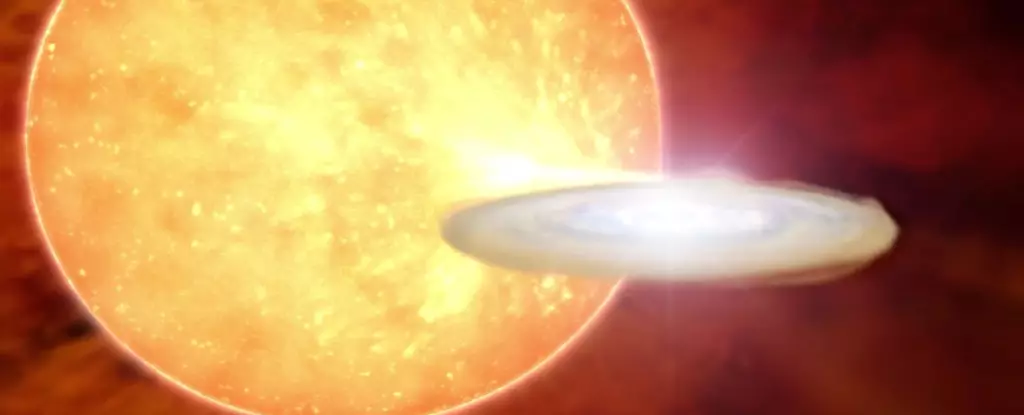Astronomy never ceases to amaze us with its captivating wonders, and T Coronae Borealis (T CrB), often referred to as the ‘Blaze Star’ or ‘Flare Star,’ has been the subject of considerable anticipation. The excitement surrounding this intriguing binary system revolves primarily around its anticipated outburst, an event that occurs approximately every 80 years. While initial predictions made it seem as though 2024 was the year to witness this stellar phenomenon, the year has come and gone, leaving enthusiasts and astronomers alike still gazing into the cosmos in hopes that this ‘late bloomer’ will finally deliver.
The fascination with T CrB traces back to its initial observation by astronomer John Birmingham in 1866. The last significant brightening event occurred in February 1946, thus marking the current wait as an unprecedented one stretching over the standard cycle. It is important to recognize that the rarity of recurrent novae, like T CrB, adds an extra layer of complexity to forecasting such events. Lying approximately 2,000 light-years away, at the intersection of the Hercules, Corona Borealis, and Serpens Caput constellations, T CrB often remains elusive, fluctuating in brightness and rarely shining bright enough for amateur astronomers to catch a glimpse without specialized equipment.
To understand the nature of T Coronae Borealis, one must delve into the mechanics of how a nova happens. T CrB is a binary star system composed of a hot white dwarf and a cooler red giant star. The white dwarf siphons material from its companion, leading to an accretion of hydrogen and helium that ultimately reaches a critical tipping point. When the accumulated matter ignites in a thermonuclear explosion, the star’s luminosity spikes, leading to a nova event.
Recent research has shed light on the changing dynamics within this system. Gesesew Reta from the S.N. Bose National Centre for Basic Sciences observed dramatic changes in the H-alpha spectral line, signifying potential changes in temperature and accretion rates. These findings have heightened expectations of a forthcoming eruption, although the inherently unpredictable nature of novae serves as a reminder that speculation is often fraught with uncertainty.
While astronomers maintain cautious optimism, it is crucial to temper expectations. When illuminated by its full brightness, T CrB is expected to reach around +2nd magnitude, which would indeed allow for visibility without advanced telescopic equipment but may not herald the dazzling display that has been dubbed the “Brightest Star Ever.” Such hype is misleading; the celestial stage is often shared with various stellar phenomena throughout the years.
Observed from Earth, T CrB ideally rises in the eastern sky during local midnight, making it more favorable for viewing during the pre-dawn hours. Currently, predictions indicate that the visibility will improve as the year unfolds, particularly avoiding periods like late November when the Sun obstructs visibility. Knowing its coordinates—Declination: +25 degrees, 54′ 58″ and Right Ascension: 15 Hours 59′ 30″—will assist eager stargazers in tracking this enigmatic star.
As the astronomy community holds its collective breath, we can expect robust scientific inquiry into T CrB’s behavior surrounding its awaited outburst. Instruments like the James Webb Space Telescope (JWST) and the Hubble Space Telescope will likely be key players in observing the star’s characteristics and any emerging phenomena. Furthermore, the American Association of Variable Star Observers (AAVSO) continues to provide updates and insights into T CrB, reiterating its significance in understanding stellar dynamics.
For enthusiasts looking to take the initiative, direct observation remains a viable option. While tracking T CrB through modern tools and resources is ideal, simply stepping outside during clear March mornings and scanning the skies for any unusual activity in the Corona Borealis constellation adds to the thrill of possibility.
The journey of awaiting T Coronae Borealis is emblematic of the larger human fascination with the cosmos. The anticipation serves as a reminder that while our scientific understanding continues to expand, the universe retains its mysteries. As we ponder when the next outburst will grace our skies, we are reminded of our place in the grand celestial ballet—a dance where patience, curiosity, and wonder intertwine in the fabric of the night sky.

